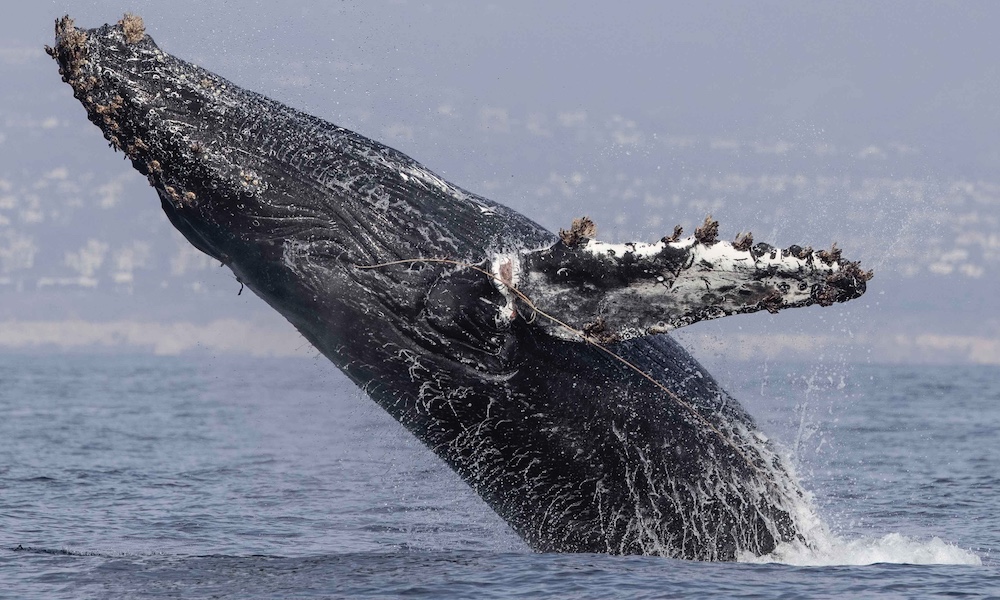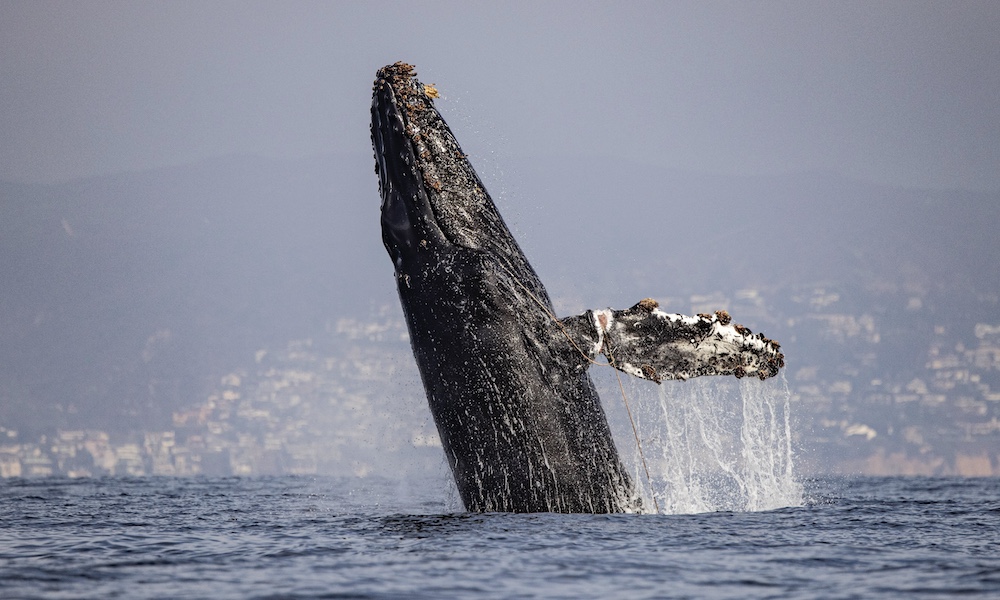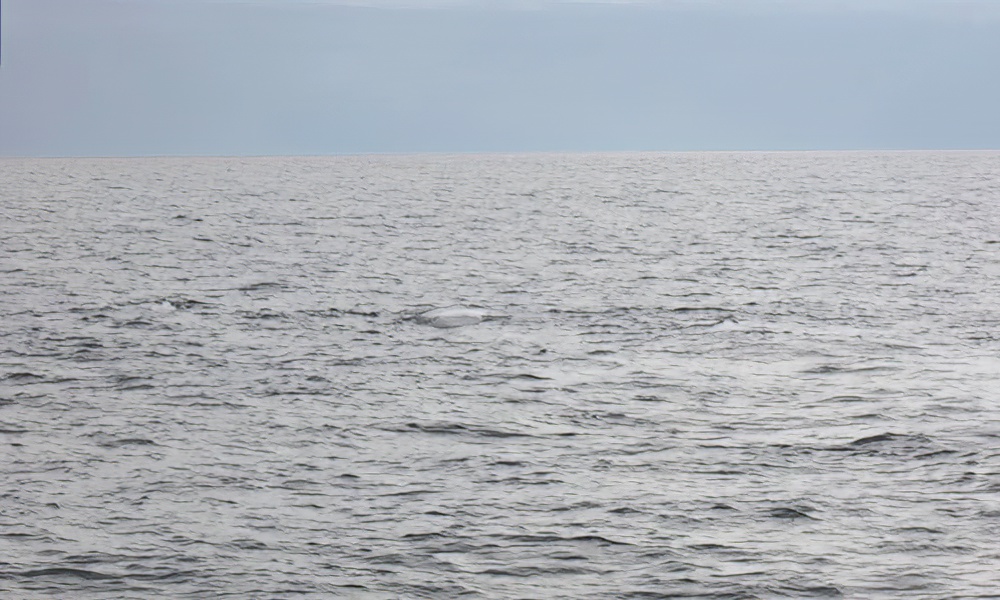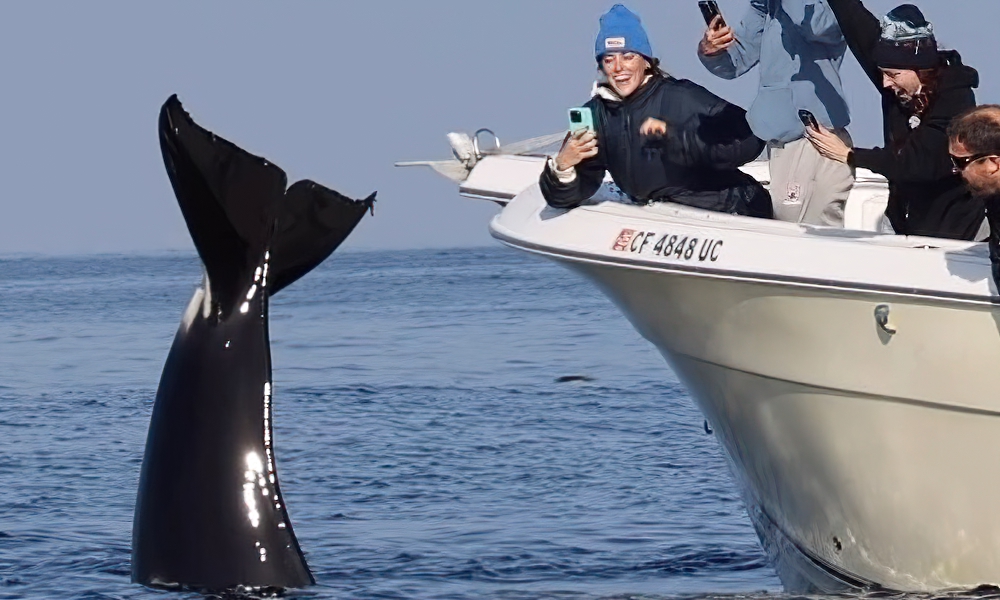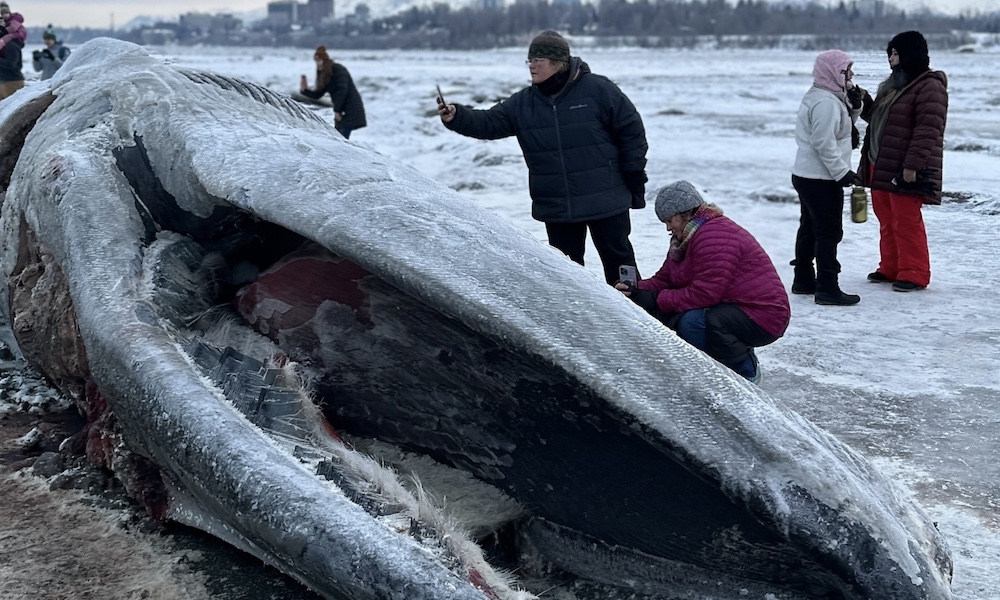**UPDATE: Orcas might not have killed the whale despite an initial claim by a prominent researcher. An examination of the carcass after the whale washed ashore revealed possible shark bites, but results of a necropsy are pending. We apologize for any erroneous information that might have been provided by sources.
Two Los Angeles-area boaters on Saturday spotted a juvenile gray whale that had recently been killed by orcas and was missing most of its head.
Alisa Schulman-Janiger, director of the ACS-LA Gray Whale Census and Behavior Project, told FTW Outdoors that Jean Huber and Christy Varni discovered the floating carcass at mid-morning less than a mile off Marina del Rey.
Huber and Varni, project volunteers, said the orcas, or killer whales, were not present. But they said tooth-rake marks (common after orca predation) were evident on carcass.
Schulman-Janiger, also Lead Research Biologist for the California Killer Whale Project, said the orcas are likely the same five orcas spotted farther south, off Orange County, on Thursday.

They were photo-identified by Schulman-Janiger after Thursday’s sighting as Bigg’s killer whale CA56 and her three kids, along with a closely associated female, CA133.
“I can’t say for sure that this was them, but they were confirmed to have killed at least one common dolphin on Thursday,” Schulman-Janiger said.
Bigg’s killer whales prey predominantly on other marine mammals, including gray whales. But virtually all previous gray whale predations have involved much smaller calves.
The CA56/CA133 pod has only been documented seven times as of Thursday, with most sightings logged off Monterey in Central California.
Until Thursday, the farthest south these orcas had been documented was off Santa Barbara in December 2023.



